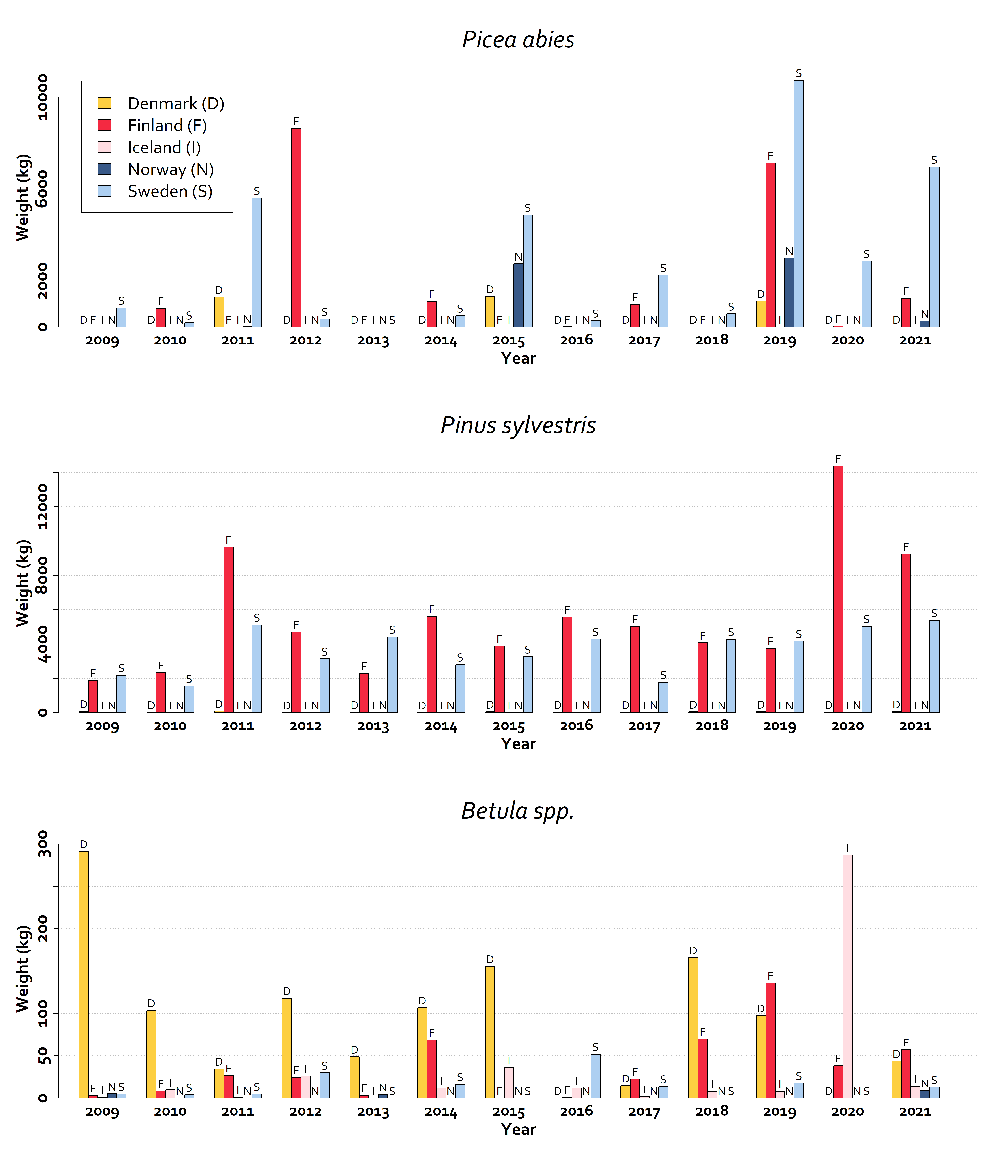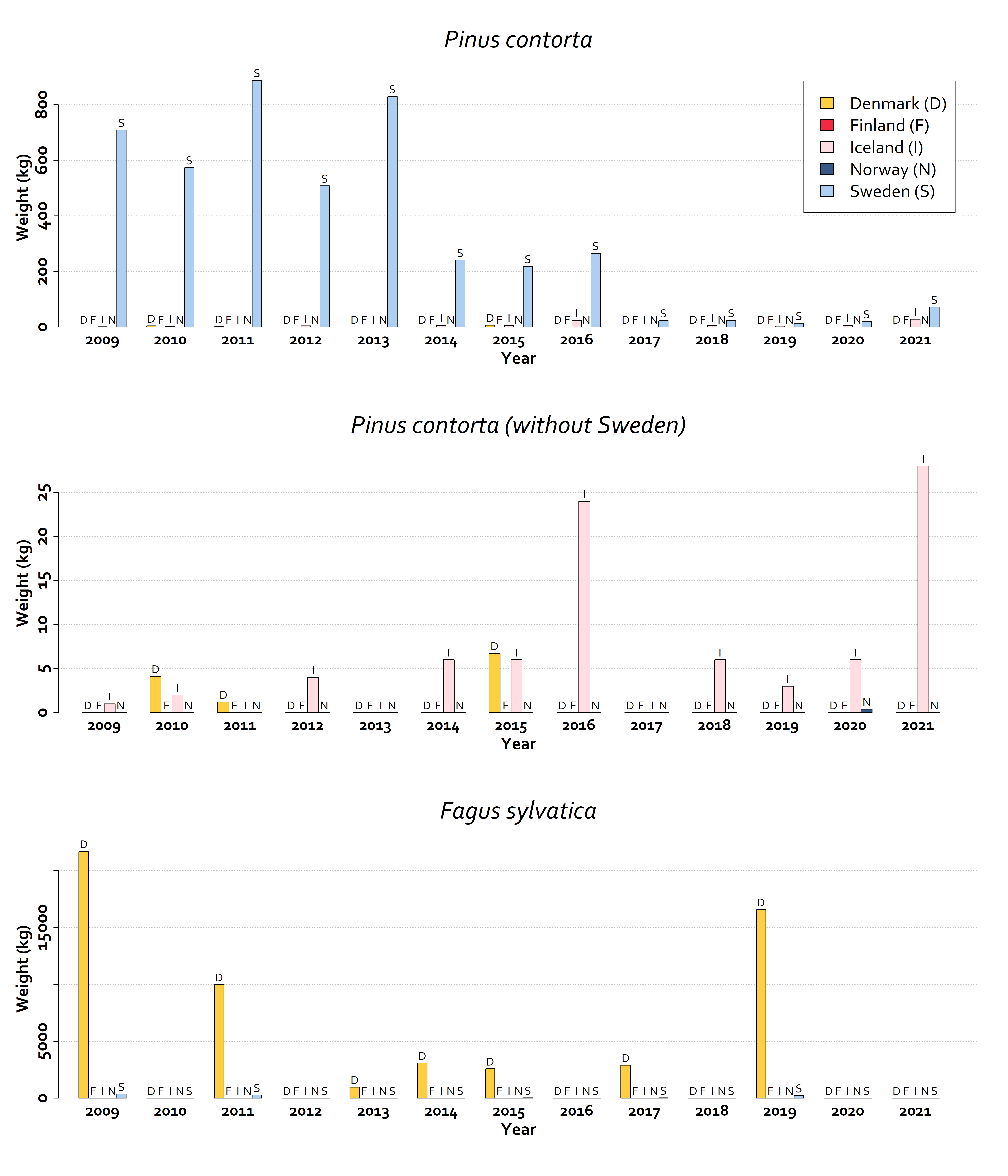
Seed Production in the Nordic Countries
The seed production is presented below (Figure 26-29) for the years 2009-2021. The following categories are included in the figures: Norway spruce (Picea abies), Scots pine (Pinus sylvestris), birch (Betula spp.), firs (Abies spp.), larch (Larix spp.), contorta pine (Pinus contorta), European beech (Fagus sylvatica), oak (Quercus spp.), other conifers and other broadleaves.
Top: Seeds of ash (Fraxinus excelisor), photo by Lars Sandved Dalen/NIBIO.

Figure 26
Figure 26-29 shows seed production for species in countries and years (year of ripening/harvest). Data were not available for Finland in 2019 and before 2013, and for Iceland before 2014.
When comparing seed production in kg among species it is worth noting that seeds of different species can have very different weights.
Norway
Norway spruce had a lot of cones in most parts of the country in 2021. Particularly high expectations were to the possibilities for cone harvest in Northern Norway since the seed available for this region is old and of a lower quality. There were plans to harvest cones for 15–25 years of seed supply for the region, but the yield did not turn out to be as high as hoped. This was mainly due to less cones available for harvest in this region and a high proportion of empty seeds due to poor pollination. The seed crop will supply seedling production for the next 15 years in northern Norway. It was also collected seed from Pinus sylvestris, Abies lasiocarpa, Alnus glutinosa and Betula pendula in 2021.

Figure 27

Figure 28
Seed Quality
All seeds produced in the EU must come from officially approved and registered basic material, such as seed orchards or seed stands. A Master Certificate is issued to each seed lot after collection and is required for marketing forest reproductive material. It assures that seeds are collected from an approved basic material and include information on the type of basic material, phenotypic and genetic quality and origin of the material.
Forest reproductive material coming from countries outside the EU may be imported to and marketed in the EU if it affords the same assurances as the material produced in the EU, based on the OECD Certificate of Identity or Certificate of Provenance.
